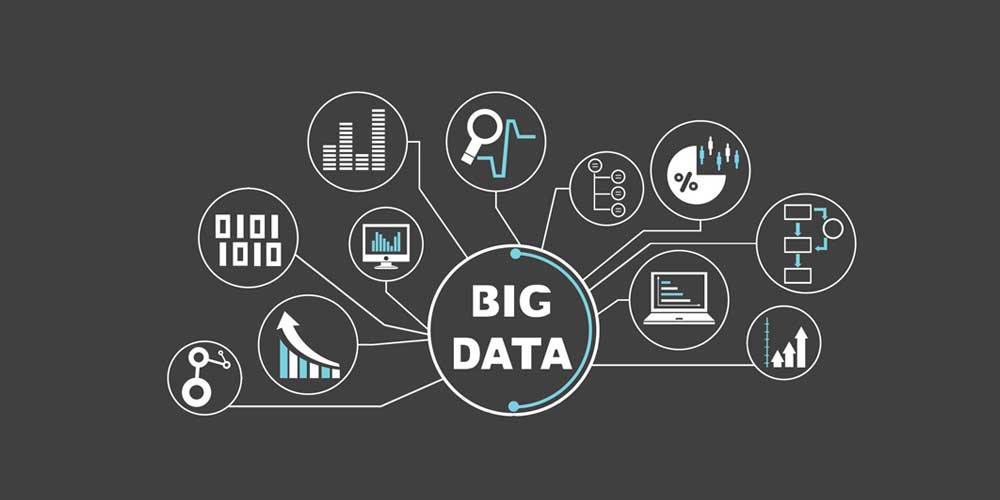Big is often scary, and that somehow applies to data. The bigger they become, the more "fear" they represent.
In short, big data is a term for data sets that are so large or complex. They represent both structured and unstructured information about something on a day-to-day basis, so large that traditional data processing applications are not anymore sufficient.
As a more detailed explanation, big data is nothing more than information about your customers that you can use for future marketing purposes. It may include anything from a person’s shopping habits (what they browse, how long they're there and what they buy) to social media metrics (interactions with your brand including dates, times, and number of people interacting).
Not the size of big data is scary, but it's what people can do with it that matters. Big data can be analyzed for many insights that lead to many possibilities. For a company, big data can lead to better decisions and better strategic business moves. Accuracy in big data may also lead to greater operational efficiency, cost reduction and reduced risk.
For marketers, those data is indeed "expensive". The data are collected from the market, and should be used to craft a strategy to better benefit the market, and also the business.
But to make use of it, they should overcome the challenges that include, and not limited to: Analysis, capture, data curation, search, sharing, storage, transfer, visualization, querying and information privacy.

Data From The Market, To The Market
Big data is something that is relatively new to many marketers. When data is already a "norm", a significant larger amount of them is not anymore "normal". A lot of data can be intimidating, particularly as most people collecting it don't know what to do with it once they have it. But those that are able to get used to processing big data, are likely to take more market share than those who don't.
To be able to process such large amount of data, let alone understand them, you need resources that are both skillful and adequate. Hate it or love it, people can't just ignore it. Big data is powering many businesses, and for that it's placing a bigger role on how industries are approaching their targets.
The word "big" in "big data" explains everything. The amount of information can be overwhelming to many people, and they may have difficulties in processing them to understand how they can benefit their marketing strategies. For marketers, big data should define marketing objectives from hard truth.
As an example of big data, think of a list of times and dates, as well as IP addresses from your visitors. Then there are their habits on your website, and how those people interact with your content, how long they stay, what internal links they click, where do their mouse cursor hover mostly, which of your contents are shared with their respective social media accounts, where do your pages' links and referrals come from, and how they are there.
With that data, think of what you can do with it? As an internet marketers, you could say "probably everything."
Start Small With Big Data
For some organizations, facing gigabytes of data for the first time may trigger a need to reconsider data management options. For those that have more resources, hundreds of gigabytes would then overwhelm them, while others may take tens or hundreds of terabytes before the data size becomes a significant consideration.
While different "big data" have different characteristics, the best way to describe big data is having: Volume, velocity, variety, variability and veracity. And the data they represent may include: Connection (sensor and networks), Cloud (computing and data on demand), Cyber (model and memory), Content/context (meaning and correlation), Community (sharing and collaboration) and Customization (personalization and value)
With that fact, the name "big data" can be intimidating even before you take a look at it. In fact, it sounds scary to most marketers that they tend to work on something else they understand, rather than learning new things they have no idea how to approach them.
The reason for this is simple: Most people in marketing had minimal exposure to analytics, and most of them are not used to statistics data. But for a business to move forward, marketers are getting more in needs to make data-based decision. And for that reason, they need sufficient knowledge and understanding about basic analytics.
To start your way into big data, you need to start small and work your way up. Big data can be overwhelming and difficult to understand if you put everything on the table all at once. This is one of the most usual reason why many marketers failed to understand and made it their downfall.
Start by collecting small amounts of that big data to then analyze them accordingly. Once you're comfortable in doing what you're doing, you can then move up to get more statistics and absorb more information.

Sampling
Before even taking a small peek into your big data, ask yourself: "Should you look at the full data set to draw certain conclusions about the properties of the data? Is the data good enough to begin with?"
To answer this, you need to do some sampling. Sampling statistics data enables you to select the right data points within the larger data set to estimate its characteristics.
For example, your website has thousands of daily visitors visiting your hundred thousand pages. Is it that necessary to look at all of them, one by one, to determine what sort of visitors have an interest on one single page of yours? Is it necessary to look at all those visitors data in order to get their browsing habit?
To predict what the big data has to offer, it may not be necessary to look at all the data to figure out what's what. A sample may be sufficient for a start at one given time.
Using Available Tools
Massive amount of data in "big data" could be overwhelming to even the professionals. You don't have to do it all alone when you have all the time you need; you can outsource your data analytics; or you could opt to use some tools to help you out.
When considering tools to aid you, the data must be processed with advanced analytics and algorithms tools to reveal meaningful information.
Before doing anything to figure out the best tools for you, the first thing to understand is the method of collecting data: Data mining software is one way. Those software comes in many forms, but they can be adapted to collect just the information you want to collect. They'll narrow your queries down to specific information you need.
A/B testing, machine learning and natural language processing are some of the techniques for analyzing that big data.
After that, you can then use dashboard analytics software. The software is meant to monitor the relevant information you've gathered earlier, all in one place for better viewing. The software can also be used to organize and present data in a way that is easier to understand.
What the dashboard analytics can do is also to bring the big data into a useable level without having you to dig into every bits of information you've collected.
While marketers are not data analysts. But with the correct tools and knowledge, you can understanding that data you've collected bits by bits. Here, you can determine whether the data you have, provide contextual analysis or any others.